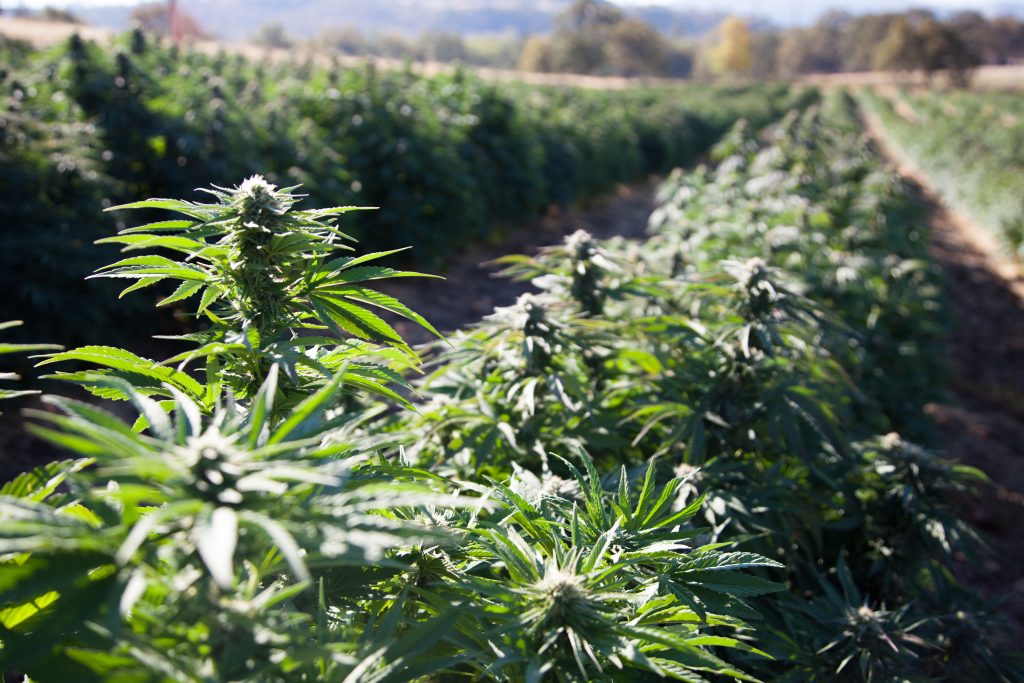

(USDA) — Ask the Expert is a new series launching on farmers.gov. In this Ask the Expert, Andrew Kowalski answers a few questions about how farmers can use the U.S. Department of Agriculture’s (USDA) Multi-Peril Crop Insurance (MPCI) hemp pilot program to insure their hemp crop.
Kowalski is a risk management specialist with the Risk Management Agency (RMA) based in Kansas City, Missouri. RMA serves America’s agricultural producers through the administration of effective, market-based risk management tools to strengthen the economic stability of agricultural producers and rural communities. As a risk management specialist, Kowalski participates in the research, development and revision of federal crop insurance policies, underwriting methods and loss adjustment procedures.
In this Ask the Expert, Andrew answers questions about crop insurance through RMA’s new hemp pilot program.
What are the requirements to be eligible for the MPCI hemp pilot program?
To start, hemp producers must be licensed by their state, tribal or federal authorities governing hemp production where the crop is grown and comply with those regulations. Hemp producers must also have at least one year of history producing the crop.
To take it a little further, the crop must also:
- Be planted in a field
- Be a variety adaptable in the area
- Be grown under a processor contract
- Be planted to a minimum of 5 acres for CBD and 20 acres for grain and fiber
- Be planted on acreage meeting the rotation requirements in the Special Provisions
- Not be planted after the Final Planting Date for the type in the county (no late planting period)
- Not be planted on acreage from which, in the same calendar year, a perennial hay crop was harvested or a crop (other than a cover crop) reached the headed or budded stage prior to termination
- Not be interplanted with another crop (excluding a cover crop) or planted into an established grass or legume
What coverage levels will be available?
The pilot program provides coverage against loss of yield because of insurable causes of loss for hemp grown for fiber, grain or cannabidiol (CBD) oil. MPCI Catastrophic (CAT) 50/55 coverage provides insurance with a 50 percent coverage level and 55 percent of the highest price election is available. At this level, your yield must fall below 50 percent of your approved yield before a loss is paid, and losses are paid at a rate of 55 percent of the highest price election.
Additional coverage is available at up to 75 percent of your approved yield, covering up to 100 percent of the highest price election.
What is an insurable cause of loss? Does it cover loss due to inferior quality?
Insurable causes of loss under the MPCI hemp pilot program include adverse weather conditions, such as drought and excess precipitation, earthquake, failure of the irrigation water supply (if caused by an insured peril during the insurance period), fire, insects and plant disease (except for insufficient or improper application of pest or disease control measures), wildlife or volcanic eruption.
The hemp pilot will not insure against failure to follow requirements in the process contract, any harvest production infected by mold, yeast, fungus other microbial organisms after harvest, or any damage or loss of production due to the inability to market the hemp for any reason other than actual physical damage to the hemp from an insurable cause of loss.
Does the policy cover crops going “hot” (above the legal THC limit)?
The MPCI hemp pilot program will not cover hemp with levels of tetrahydrocannabinol (THC) in excess of 0.3 percent on a dry weight basis, in accordance with the Agriculture Improvement Act of 2018 and applicable federal regulations.
How did RMA determine which states to include in the pilot?
For the 2020 crop year, it was determined the pilot would initially be offered in states where at least 1,000 acres of hemp were planted and reported to USDA Farm Service Agency (FSA) in 2019. Given the amount of different data sources, FSA reported planted acreage was a common, verifiable source to determine where the pilot would be initially offered.
Are there any special requirements for reporting hemp acreage?
It is in the producer’s best interest to report their acreage to FSA and their crop insurance agent as soon as possible after planting. However, the final acreage reporting date for the MPCI pilot program is Aug. 15, 2020.
On or before the acreage reporting date, a producer must submit a copy of the official certification form or official license issued by the applicable governing authority authorizing the producer to grow hemp and a copy of each processor contract. Producers must also report the applicable land identifier, including global positioning system coordinates, for hemp acreage.
Source: U.S. Department of Agriculture









